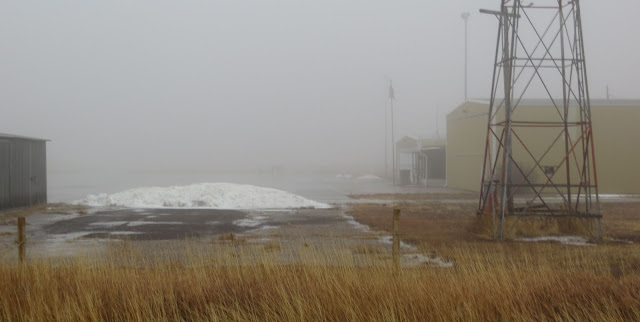Thoughts, observations, sea stories and ideas from a former sailor and lifelong rancher
Sunday, December 25, 2016
The physics of not hitting the ground on Christmas (or any other day)
Merry Christmas to all!
My 5:30 a.m. Christmas Day wakeup call was a thunderstorm.
That's right, lightning, thunder and heavy rain. The temperature wasn't very far north of freezing and the ground was still frozen so the rain turned instantly to slush, then ice. As I write this the temperature is 33 and falling, it's very foggy, and a brisk north wind is driving a fresh batch of stinging sleet from the heavens. The weather guesses say it's supposed to start snowing and blowing in an hour or so. On the upside, we're looking only at an inch of snow in the prediction. On the downside, that's enough to make a blizzard. So not a great travelling day.
And now, on with the show.
The other day Sarge had a post about the phynal phlights of the Phantom in U.S. service. Posted a couple of interesting videos he did. Extremely cool to see those lovely QF-4E's motoring around the Wisconsin sky.
One video was taken from the ground and the other was a helmet cam video from inside the cockpit. As I said, they were fun to watch, but parts of each video made me cringe. I did not feel good about the low speed dirty pass.
That pass was made at about 500' AGL with gear, flaps and hook down, very slow, and with a pretty hefty angle of attack. I think they were demonstrating both the carrier landing configuration and slow speed flight.
Now I'm not a pilot, and I've never played one on tee-vee. Nor have I stayed at a holiday inn express. I did in my younger days spend a bit of time around naval air patches, ashore and afloat, and I've seen more than one low and slow come out on the wrong side of the ledger.
In the comments of sarge's post Juvat explained what being behind the power curve means in aviation. Basically, you can get into a part of the flight envelope where you no longer have enough power available to 1) avoid the stall and/or 2) overcome the inertia of your descent vector. With enough altitude you can recover before hitting the ground, but without enough altitude you will hit the ground most crunchingly.
One of the first mishaps I investigated was the one that took the life of the first female Naval Aviator, Barbara Allen Rainey and her student Naval Aviator. They got low and slow and hit the ground.
One of the last mishaps I worked was for an F/A-18, the pilot of which entered a loop at too low altitude at an airshow in California.
In between those two I saw a number of slow, dirty, nose-high aircraft come to grief. And that's why the passes in those videos made me nervous.
Here are a couple of interesting videos. One is old-old school, one merely old school. A video can be worth a zillion words.
Subscribe to:
Post Comments (Atom)







A KB series International! I had a 1947 KB-1 pickup!
ReplyDeleteThat one is a '48 farm truck with the PTO-driven dump hoist.
DeleteNice weather. Not!
ReplyDeleteI vaguely remembered that crash at El Toro. (I was stationed at Offutt at the time.) After watching the video I had to do some searching, wondering if the pilot had survived. Marine Col. Jerry Cadick was critically injured but did survive. I see that he passed away in 2015 at the age of 72. Kind of young. RIP Colonel.
The weather went blizzardy about an hour after I posted this. Uncomfortable and not perfect for planned festivities, but kinda cool nonetheless.
DeleteRather a miracle that the pilot survived. I've long since forgotten what his injuries were though I'm sure I was involved in typing (yes, typing, on a typewriter) them up for the MIR. Each day I'm more and more surprised to find that young men are getting old and dying. Not liking the trend.